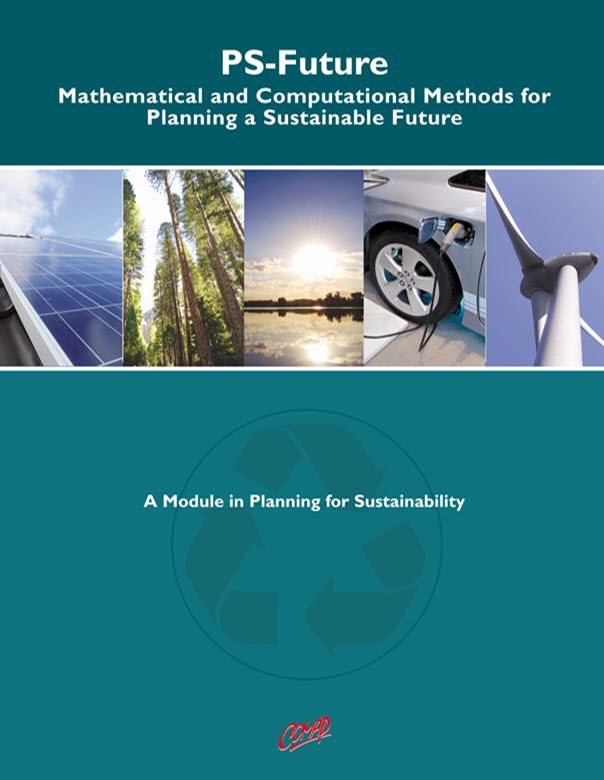Invasive Species A Module in Planning for Sustainability (Teacher)
Author: Lisa Rodgers and Gwen Spencer
About This Module:
This module focuses on the role of non-native species in ecosystems. Students explore local examples of such species, including how and why these species become established in ecosystems. Then, after working through the concept of population growth and competitive exclusion, students work with a hands-on randomized simulation model to explore how the number of individuals of a nonnative (or an exotic) species population might influence the ability of that species to take hold and become invasive, doing damage to the ecosystem. A second deterministic model raises questions about how the spatial pattern of an invasion can impact the effectiveness of efforts to contain or slow invasive spread. The module concludes with a focus on sustainability: how construction workers, ecologists, farmers, groundskeepers, marine biologists, landscapers, policy makers, urban planners, wildlife biologists, and zoologists study, plan for, respond to, and manage invasive species?
This module is written to be taught in roughly one week to one and one-half weeks of class time, and is separated into 4 lessons of approximately 90 minutes each, though each lesson has a logical break midway through for teachers working with shorter class periods. The fifth lesson is for a conclusion and optional assessment, which could take as little as 20 minutes or as much as a few days. Lessons are intended to be introductory enough to be accessible to 9th-grade students.
Summary of Module Objectives:
Lesson 1: The student will be able to define and describe invasive species and identify a local example of invasive species. The student will also be able to describe the potential impacts of an invasive species.
Lesson 2: The student will be able to describe the different phases of logistic population growth and understand potential causes of these different phases. The student will be aware that model findings depend on simplification and assumptions.
Lesson 3: The student will develop an understanding of how an increased number of individuals introduced will correlate with an increased likelihood of success in mate finding (and thus an increased likelihood of establishment by the invader). Similarly, the student will understand why some non-native species introductions do not result in a population taking hold.
Lesson 4: The student will consider a simulation based on recursive rules to understand that once a population is introduced, how that population spreads may be modeled in a variety of ways that will have different implications for what interventions are useful. The student will consider how spatial changes in initial conditions affect simulation results. After practicing the implementation of recursive rules, the student will explore how effectiveness of invasive removal depends on the spatial pattern of the initial invasion.
Lesson 5: Conclusions and optional project-based assessment. The student will return to the thinking maps created in Lesson 1 of the module and re-evaluate his or her initial response. The student will explore a broad decision-making process to understand that each nonnative species should be considered individually.
What are the "Big Ideas"
Students will learn that ecosystems exist as a delicate balance of abiotic and biotic factors. When one of these factors is disrupted, the ripple effect of this disruption can be significant. We use mathematical models to simplify complex systems with the hope of using the predictions and qualitative observations that arise from those models to inform decision makers about how to address new ecological problems.
In what types of classes could this module be used?
This module is suitable for students in Biology and Environmental Science, and it fits well as an application problem after learning about food webs.
Prerequisite skills
Students should have a basic understanding of ecology and ecosystems. The following terms will be used in the module: ecosystem, food web, species, niche, competition, resources, and carrying capacity. In addition, students should have basic graphing skills.
Materials
Method to watch online animations as a class, such as a computer and projector. Two different color tokens, two different coins, or two different color sticky notes to use in Lesson 3. Student access to a computer, tablet, or smartphone with a web browser. Student handouts are available in the format of a Lab Notebook. It is designed so that teachers can produce one copy for each student that will last the duration of the module, but teachers should use discretion in determining if any pages of the Lab Notebook aren't necessary for their particular group of students.
About the PS-Future project and its modules
The PS-Future project is a collaboration led by Rutgers University involving the Center for Discrete Mathematics and Theoretical Computer Science (DIMACS), the School of Environmental and Biological Sciences, and Heldrich Center for Workforce Development at Rutgers University; the Consortium for Mathematics and its Applications (COMAP); Colorado State University; the Groton School; Hobart and William Smith Colleges; and a number of authors and educators from around the country.
The modules are intended to provide 4-6 days of classroom activities on a variety of topics that apply computational and mathematical methods in sustainability. Each module links to Common Core State Standards (CCSS) in Mathematics and targets content for a particular mathematics course. Each module also addresses disciplinary core concepts required by the Next Generation Science Standards (NGSS), especially targeting concepts taught in Environmental Science and Biology courses. The modules are also particularly suited to address Practice Standards for both mathematics and science.
Each module contains examples of jobs related to the module topic, together with a discussion of the skills and training required, as well as information on the salary and future demand for such jobs. In many cases, specific job titles are mentioned within the modules.

Mathematics Topics:
Application Areas:
Prerequisites:
You must have a Free Educator Membership or a paid Full Membership to download this resource.
If you're already a member, login here.